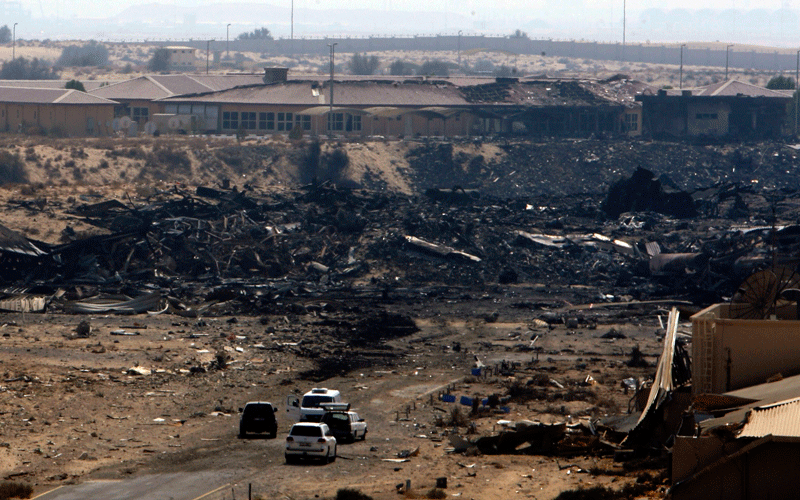The Tragic Crash of UPS Airlines Flight 6: Lithium Battery Fire Disaster
Khái niệm cốt lõi
Lithium battery fires pose a significant hazard to air cargo, as demonstrated by the tragic crash of UPS Airlines Flight 6 due to a fire on board.
Tóm tắt
The content delves into the harrowing incident involving UPS Airlines Flight 6, where a lithium battery fire led to the fatal crash. The narrative unfolds chronologically, detailing the events from the initial emergency declaration to the eventual impact. Key highlights include:
Initial emergency at 32,000 feet due to a fire on the main deck.
Crew's heroic efforts amidst failing systems and loss of control.
Impact of lithium batteries' reactive nature on aviation safety.
Challenges faced by crew in communication and navigation during the crisis.
Ineffectiveness of safety systems against intense lithium battery fires.
Regulatory gaps and flaws in emergency procedures contributing to the tragedy.
Alone in the Inferno: The crash of UPS Airlines flight 6
Thống kê
"In 2007, three billion lithium batteries were manufactured annually, but by 2017, that number had risen to seven billion."
"At least 400 kilograms of lithium metal batteries and two tons of lithium ion batteries were aboard UPS flight 6."
"Flight recorder data showed that First Officer’s cables had fallen so slack that even full deflection of the control column could not produce any elevator movement."
Trích dẫn
"I have no control of the aircraft. I have no pitch control of the aircraft." - Captain Lampe
"Sir we are running out of oxygen." - First Officer Bell
Thông tin chi tiết chính được chắt lọc từ
by Admiral Clou... lúc admiralcloudberg.medium.... 01-17-2024
https://admiralcloudberg.medium.com/alone-in-the-inferno-the-crash-of-ups-airlines-flight-6-507d13f3e481
Yêu cầu sâu hơn
How has this incident influenced regulations regarding lithium battery transportation?
The crash of UPS Airlines flight 6 had a significant impact on regulations regarding the transportation of lithium batteries. The incident highlighted the dangers posed by these batteries, especially in air cargo, and brought attention to the need for stricter safety measures. As a result, regulatory bodies such as the International Civil Aviation Organization (ICAO) and the Federal Aviation Administration (FAA) have implemented new rules and guidelines to address the risks associated with transporting lithium batteries by air.
One key change that has been made is an increase in awareness and training for airline personnel regarding the hazards of lithium batteries. Pilots and crew members are now better educated on how to handle situations involving battery fires and are trained to respond effectively in case of an emergency. Additionally, there have been improvements in labeling requirements for shipments containing lithium batteries, ensuring that all packages are properly identified and handled according to safety protocols.
Furthermore, there have been updates to packaging standards for lithium batteries being transported by air. These include stricter guidelines on how batteries should be packed, stored, and handled during transport to minimize the risk of fire or explosion. Manufacturers are also required to conduct more rigorous testing on their products to ensure compliance with safety regulations before they can be shipped via air cargo.
Overall, this incident has led to a greater emphasis on safety when it comes to transporting lithium batteries by air, with regulators working closely with airlines and manufacturers to prevent similar tragedies from occurring in the future.
What additional safety measures could have potentially prevented this tragedy?
Several additional safety measures could potentially have prevented the tragedy involving UPS Airlines flight 6:
Enhanced Fire Suppression Systems: Implementing active fire suppression systems specifically designed for combating lithium battery fires could have helped contain or extinguish the blaze before it spread out of control.
Improved Cargo Compartment Design: Redesigning cargo compartments with stronger fire-resistant materials that can withstand higher temperatures would provide better protection against thermal runaway events involving large quantities of lithium batteries.
Early Detection Technologies: Utilizing advanced smoke detection technologies capable of detecting fumes trapped within cargo containers or under rain covers early on would allow for quicker response times from flight crews.
Real-time Monitoring Systems: Installing real-time monitoring systems that track temperature fluctuations within cargo holds could alert crews at any sign of overheating or potential fire hazards.
Emergency Response Training: Providing comprehensive training programs for pilots and crew members focused on handling emergencies related to battery fires would ensure swift and effective responses during critical situations.
By implementing these additional safety measures proactively, airlines can further enhance their preparedness in dealing with incidents involving hazardous materials like lithium batteries.
How can advancements in technology mitigate risks associated with lithium battery fires in air cargo?
Advancements in technology offer promising solutions for mitigating risks associated with lithium battery fires in air cargo:
Thermal Runaway Prevention Systems: Developing innovative systems that actively monitor individual battery cells' temperature levels can help identify potential issues before they escalate into thermal runaway events.
Fire-Resistant Battery Packaging: Creating specialized packaging materials equipped with built-in flame retardants or insulating layers can contain fires within individual battery units without spreading throughout a shipment.
3.Emergency Ventilation Mechanisms: Introducing automated ventilation mechanisms within cargo compartments triggered by smoke detectors can quickly remove toxic fumes from enclosed spaces during fire incidents.
4.Battery Management Software: Implementing smart software solutions that regulate charging cycles based on environmental conditions can prevent overcharging scenarios leading up-to thermal runaway events
5.Remote Monitoring Systems : Deploying remote monitoring systems equipped sensors inside shipping containers allows ground staff & pilots access real-time data about temperature changes & other vital parameters which might indicate possible threats
By leveraging these technological advancements alongside stringent regulatory frameworks & industry best practices , airlines & logistics companies will significantly reduce risks associated w/transportationof Lithium Batteries
0
